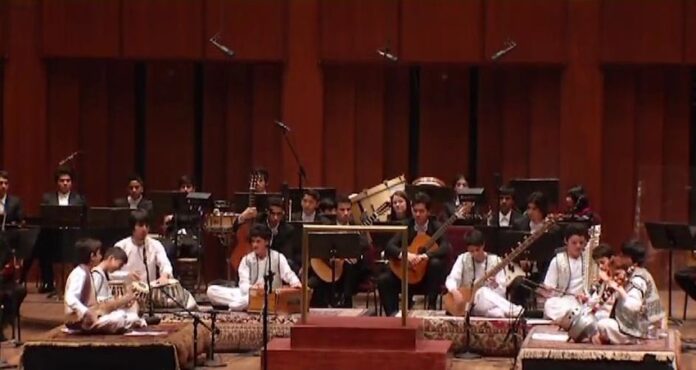The world was pleasantly surprised when the news of Zohra Orchestra, Afghanistan’s first all-female orchestra, circulated over the social media in 2015. When a region is in perpetual state of war and where women are mostly invisible, instances as such are a breath of fresh air, a margin of hope. Ahmad Sarmast, the founder of the orchestra and Afghan National Institute of Music (ANIM), lost hearing in both of his ears after surviving a bomb blast that targeted the country’s only music institute. For Sarmast and many others, making music in the country was an act of resistance, an attempt to rise beyond the shackles of tyranny and terror. But, for the rival groups fighting for power, this was an offense.
Incidents of attacks on places of performing arts have systematically intimidated the young Afghan generation which was compelled to flee the country after the takeover by the Taliban on August 15, 2021. Now, at the crossroads with no promise of the future in their own country, Afghan artists in diaspora are making noise around the world, doing exhibitions and performances – crying out for help.
While on one hand, the West tries to glorify the miseries of Afghans and advocates for their rights, those left behind in Afghanistan do not have much to hold on to. The de facto government in Afghanistan has shut down several radio stations in the country and many female TV anchors have been forced to quit their jobs.
On the other hand, white-skinned journalists, both male and female, seem to be sauntering in Kabul and other major cities of the country. Does it mean the local journalists and media personnel matter less than the foreigners? Some say that news of media personnel being oppressed by the Taliban is largely exaggerated but the closure of media platforms tell otherwise.
While awaiting their recognition, the Taliban might strive to create a seemingly safe environment for foreign as well as local news reporters and TV anchors, it is yet to be seen if they would allow the same number of females in the media as before. Also, what does the future hold for those who used to make music and depicted the lighter, happier side of Afghanistan through art? Would the Taliban let them make music? Would we see any rising artists in Afghanistan? Would the Afghan artists in diaspora ever come back? Knowing the Afghan Taliban’s past, it is hard to answer these questions in affirmative, but these times are different. If Saudi Arabia can host a pop music concert, why can’t the Afghan artists have their lives back in their own country? The Afghan Taliban will have to demonstrate flexibility, only if they ever deem art as one of the integral elements of a prosperous, growing society.
Religious values, if applied in the rightful manner in the right places, can serve the society in the best possible way. But the ruling entities in Afghanistan will have to see what works in current Afghanistan as a theocracy and what doesn’t. They also must consider how the common Afghans’ mentalities and aspirations have evolved. Despite the war, culture did flourish. Afghans did make art.
Afghanistan shouldn’t always be known for its miseries and catastrophes. The world must see the richness of culture that lies in its bosom, and hear the tunes its people have been longing to play.
سبزه با ناز میآید، محرم راز میآید
The world will be green with abundance again, the keeper of faith will arrive (again)




